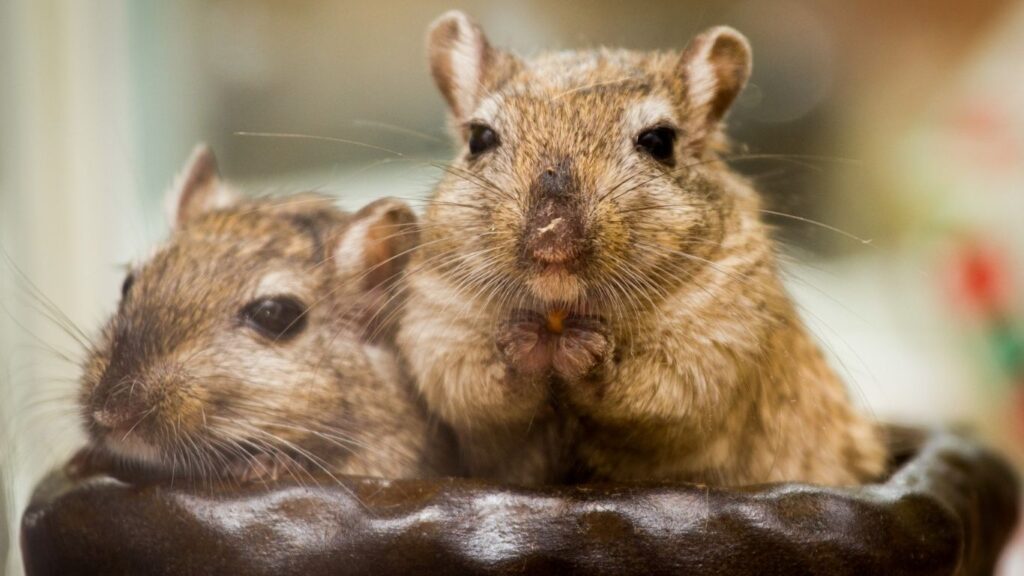Do you know the difference between hamsters vs gerbils? If not, you’re not alone! A lot of people don’t know the difference, but it’s an important distinction to make.
In this article, we will discuss the key differences between hamsters and gerbils. We’ll talk about their appearances, their habitats, their behavior, and more. By the end of this article, you’ll be able to decide which type of small rodent is right for you!
Appearance
Hamsters and gerbils may look very similar, but there are some key differences in their appearances. For one thing, hamsters have much larger eyes than gerbils. Hamsters also tend to be stockier and have shorter tails than gerbils.
Gerbils have four toes on their front feet and five toes on their back feet. Hamsters have five toes on both their front and back feet.
Gerbils are slimmer and have longer tails. Another difference is in their fur. Hamsters have thick, soft fur, while gerbils have thinner, rougher fur. Finally, hamsters come in a variety of colors, while gerbils are typically brown or gray.
Hamsters have a stockier build and shorter tails than gerbils. Hamsters also have fur on their feet, which helps them to grip the bars of their cages, while gerbils do not. Hamsters typically weigh between 2-4 ounces, whereas gerbils weigh between 1-2 ounces.
Habitat
Hamsters and gerbils originate from different parts of the world. Hamsters are from Syria and North Africa, whereas gerbils are from the deserts of Central Asia. Hamsters are mostly nocturnal, whereas gerbils are diurnal. Hamsters live in burrows underground, whereas gerbils build their homes aboveground.
Hamsters are typically found in warm, dry climates, while gerbils are more versatile and can live in a variety of habitats, including deserts, forests, and even urban areas. Hamsters like to burrow and are mainly nocturnal, while gerbils are more active during the day and don’t borrow as much.
The construct from which a hamster and gerbil are made is also different in terms of cage size requirements. Even though they require more space for exercise, hamsters need less living space than do gerbils because they’re physically smaller animals, who can live comfortably in an aquarium as big as 10 gallons or more for males and 14 gallons or bigger for females.
Gerbils, on the other hand, require a minimum of 24×24 inches for one to live happily and healthily. This is because they are very active creatures that like to jump and climb.
Behavior
The two most common types of hamsters are the Syrian hamster and the Dwarf Campbell’s Russian hamster. The three most common types of gerbils are the Mongolian gerbil, the Chinese gerbil, and the African pygmy gerbil.
Hamsters are nocturnal, which means they sleep during the day and wake up at night. Gerbils, on the other hand, are diurnal, which means they sleep at night and wake up during the day.
Hamsters have cheek pouches in which they store their food so that they can carry it back to their nests. Gerbils do not have these pouches. Hamsters also groom themselves more than gerbils and tend to be less vocal.
This difference in behavior can be seen in how each animal interacts with its surroundings.
Hamsters tend to hide away in their cages when people are around, while gerbils will come out to explore and play. This makes hamsters better for people who want a pet they can interact with less often, while gerbils require more attention from their owners.
Hamsters are more popular as pets than gerbils because they are easier to care for. Hamsters require a wheel to run on, whereas gerbils do not. Hamsters also require a specific type of diet, whereas gerbils can eat a wider variety of foods.
Reproduction
There are some differences in the way hamsters and gerbils reproduce. Hamsters can have up to six litters a year, while gerbils usually only have one or two.
The gestation period for hamsters is about 16 days, while for gerbils it is about 21 days. Baby hamsters are born completely furred and with their eyes open, while baby gerbils are bald and blind when they are born.
Hamster vs Gerbil Life Span
Hamsters typically have a shorter lifespan than gerbils, and they are also more prone to getting tumors. Gerbils, on the other hand, are less likely to get cancer and can live for up to six years.
Can Gerbils and Hamsters Co-Exist?
Hamsters and gerbils can co-exist. Hamsters are territorial animals that like to have their own space, so it is important to have one hamster per cage.
Gerbils, on the other hand, are social animals and can live in groups. If you have more than one hamster, they will likely fight each other. If you have more than one gerbil, they will get along well.
Hamster vs Gerbil: Which One is Right for You?
So, now that you know the key differences between hamsters and gerbils, which type of small rodent is right for you?
If you’re looking for a furry friend who is active at night and doesn’t mind living in a dry climate, hamsters may be the right choice for you.
If you’re looking for a more versatile small rodent who is active during the day and can live in a variety of habitats, gerbils may be a better fit for you.
Finally, hamsters tend to be more expensive than gerbils. So if you’re on a tight budget, a gerbil may be the better option for you.
Don’t forget to come back to our blog to learn more tips for caring for your new pet.

